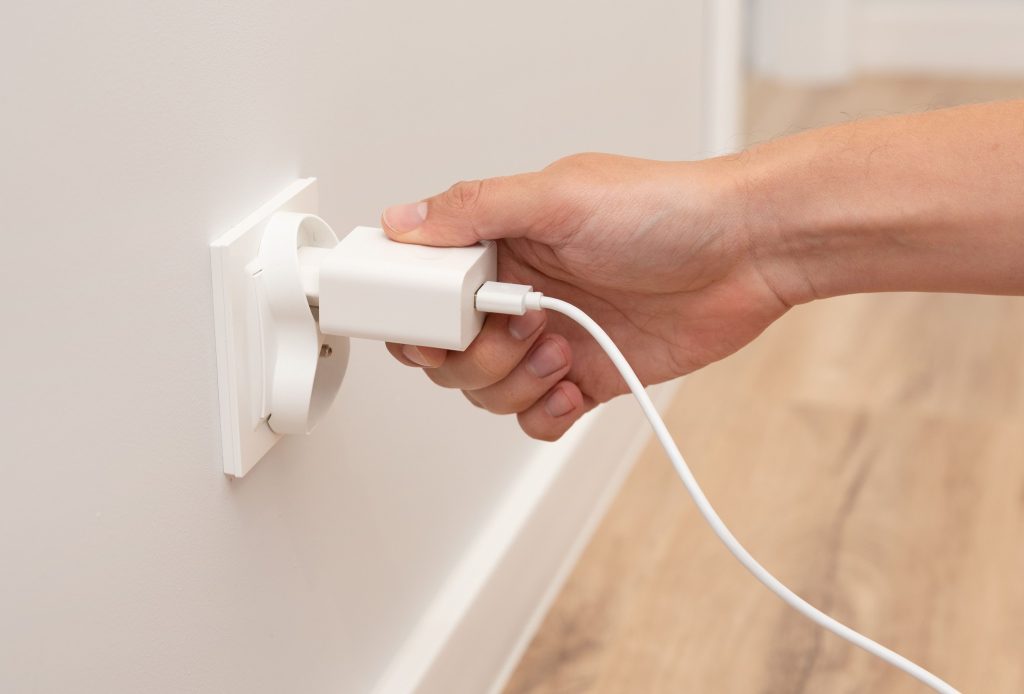:max_bytes(150000):strip_icc():format(jpeg)/GettyImages-2212871428-9f202a1e95954b238a062164a88ac90d.jpg)
Smart home technology has transformed the way we control our appliances and devices. There’s no more worrying if you left the lights on or the garage door open. You can use voice assistants, apps, and other smart home automation tools to prevent user error.
The convenience and energy savings are welcome upgrades. However, as with any electronics, improper use can lead to serious risks, because not all devices are compatible with smart plugs or outlets. Experts explain which appliances and devices should never be used with a smart plug and why.
- Greg Rhoades is the director of marketing for smart and new technology at Leviton.
- Sergey Nikolin is the president of Product Air Heating & Cooling and a licensed HVAC expert.
How Do Smart Plugs Work?
Smart plugs offer a simple upgrade for ordinary electronics. They look like regular plugs but have more functionality because they’re connected to Wi-Fi. Once inserted into a standard wall outlet, a smart plug lets you control the energy supply, shut-off time, and more through an app or voice command.
They’re handy for repetitive tasks, like turning on a living room lamp at dusk or powering off a fan after everyone leaves for work.
Items You Should Never Connect to a Smart Plug
Greg Rhoades, director of marketing for smart and new technology at Leviton, says smart plugs can “make virtually anything smart,” but that doesn’t mean they’re perfect. You should always check the manufacturer’s guidelines for each smart plug to ensure safe usage, he says. Here are a few devices you should always avoid connecting to a smart plug.
1. Appliances with Heat
While they work well with many everyday electronics, Rhoades cautions against using smart plugs with devices with heat or specialized control settings, like space heaters or coffee pots. “If an empty coffee pot were to be remotely turned on, it could overheat and cause damage,” he says. “Better to just use a coffee pot with a built-in timer.”
2. Some Outdoor Devices
Even something harmless like outdoor walkway lights can pose a problem if not plugged into a smart plug that’s rated for weather exposure. Appliances that might be exposed to the elements, especially water and snow, need special treatment.
3. High-Powered Appliances
Many people mistakenly believe they can activate any device with a smart plug. Sergey Nikolin, president of Product Air Heating & Cooling and a licensed HVAC expert, explains that most smart plugs are rated for 10 to 15 amps. That may be plenty for a lamp but not for appliances that draw large amounts of power quickly or over long periods. “
Plugging high-powered appliances, like AC units and space heaters, into smart plugs can overload them, causing a fire risk.
4. Anything with Manual Settings
Nikolin also cautions against using smart plugs with devices that don’t automatically resume function when power is restored. “Smart plugs only control power, not function,” he explains. “So if your device requires you to push a button after it resumes power—like a washing machine or some dehumidifiers—automation is useless.”
To test compatibility, Nikolin suggests unplugging the device while it’s running and then plugging it back in. If it resumes operation all on its own, it may be suitable for smart plug use. If not, steer clear.
5. Smart or Programmable Devices
Another overlooked problem is layering automation. For example, smart TVs, robotic vacuums, and programmable thermostats are already designed to operate independently. “Plugging them into smart plugs can interrupt firmware updates, reset scheduled routines, or even corrupt memory logs,” Nikolin warns. “Let one system be in charge—don’t double up.”
His advice is simple. “Don’t use a smart plug if the device has a screen, a motor, or a memory. Losing power mid-task could cause confusion, delay, or damage,” he advises.

